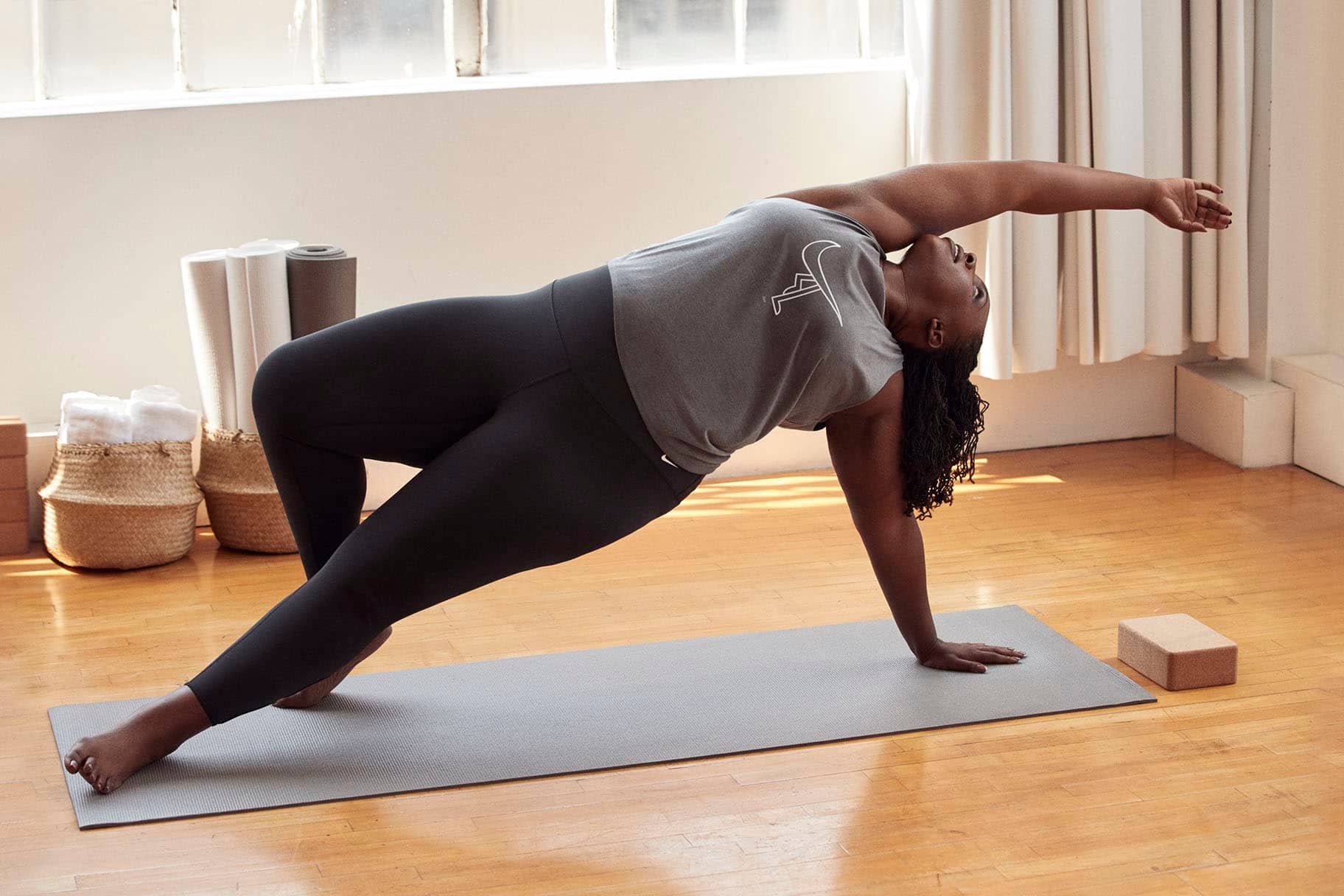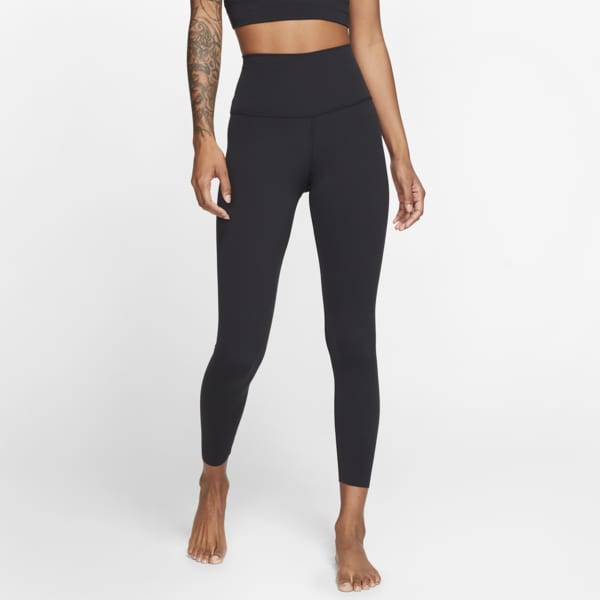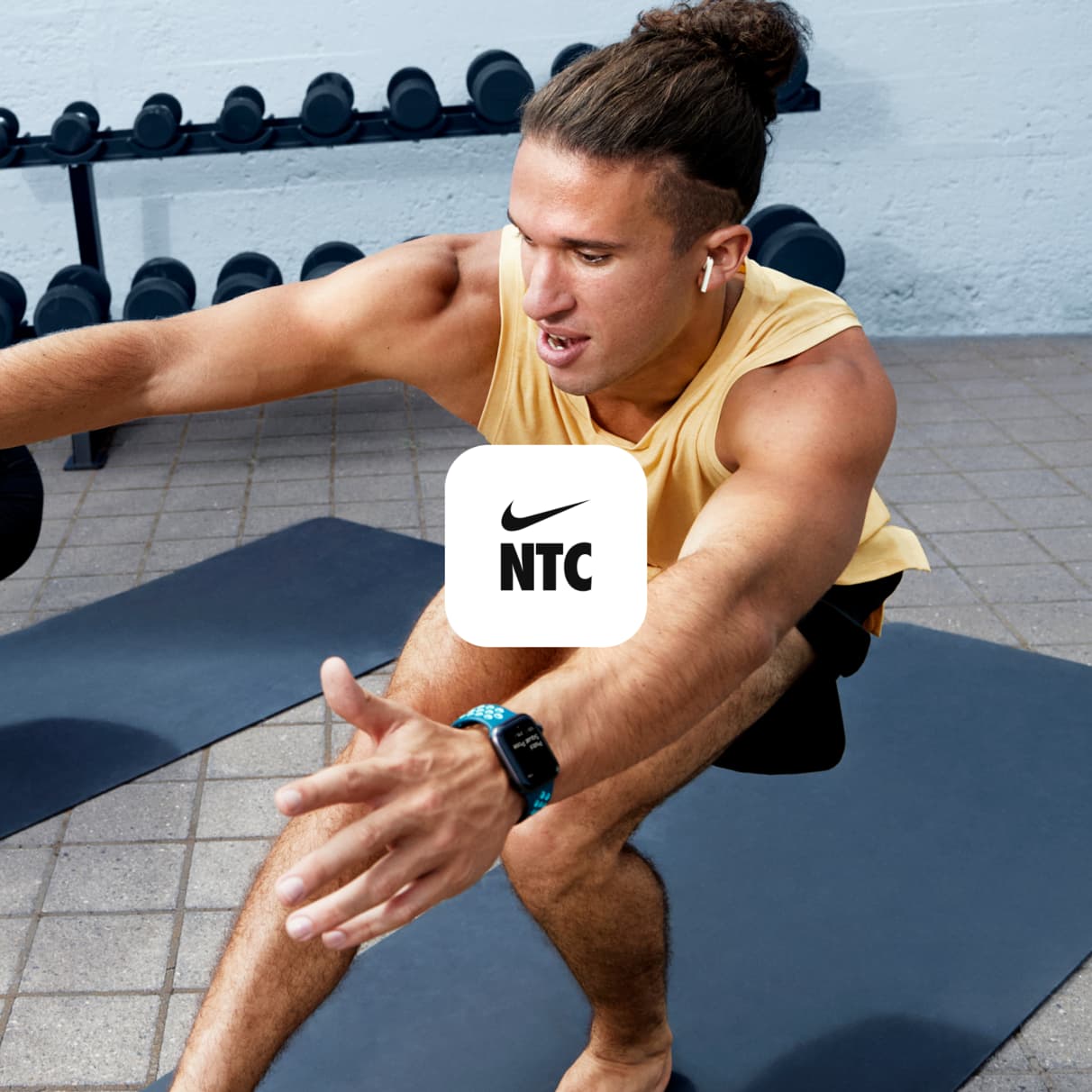Vinyasa Yoga and Why You Should Try It
Sports & Activity
Vinyasa involves moving from one pose to the next at a fast pace and increasing your heart rate.

If you’re looking for a style of yoga that feels more like a dance workout and less like a slow-paced and restorative practice, consider vinyasa. Vinyasa involves moving quickly from one pose to the next in a flow. As you move through postures and sequences at a faster pace, you increase your heart rate.
“The hallmark of vinyasa is the organic flow of breath and moment. It literally means ‘to move in a special way’ and that special way is with awareness,” says Jonah Kest, a Nike trainer and vinyasa and ashtanga yoga instructor.
In vinyasa flow yoga, you synch movement with every inhale and exhale. For example, you inhale during the lengthening phase or the expansion part of the pose and exhale as you move into the deeper part of the pose, according to the American Council on Exercise.
Many people refer to vinyasa as a form of ashtanga yoga, where there is one breath for each movement. Other styles of yoga, such as hatha yoga, tend to be more rigid and require you hold a pose for a few seconds before moving into another posture. But with vinyasa, the free flow is like a dance, and your breath is your partner, Kest explains.
You can expect to do traditional yoga poses and postures, such as downward-facing dog pose, plank post, upward-facing dog pose, forward fold pose, and warrior I, II, and III poses, as well as sequences that involve sun salutations, binds and twists in a vinyasa class.
Now that you know what vinyasa is about, read on to learn some of the benefits of following this style of yoga, whether for beginners or more advanced practitioners.
The Benefits of Vinyasa Yoga
1.Improved Cardiovascular Fitness
Because you transition from one pose to the next in vinyasa flow, you increase your heart rate and make your body work harder for a longer period of time, even though you’re moving at a lower intensity.
“The cardiovascular and lymphatic systems greatly benefit from vinyasa yoga. Stamina increases as you practice as well as heat builds in the body. This creates more circulation and ultimately purifies the body,” Kest says.
According to a small August 2020 study in The Journal of Sports Medicine and Physical Fitness, which enlisted 24 moderately trained participants to do a 90-minute yoga class, vinyasa yoga effectively improved their cardiovascular fitness and promoted weight loss. Plus, yoga counts as a moderate-intense physical activity according to an August 2017 study in the Journal of Physical Activity and Health.
This means that vinyasa yoga is a great low-impact and moderate-intensity cardio exercise to do in between other demanding workouts, such as HIIT, running, and cross training, throughout the week.
2.Strengthened Muscles
By working with the resistance of your bodyweight, you’ll strengthen different muscle groups, including your arms, back, core, butt and legs, Kest says.
For example, holding a plank pose in yoga builds up your core while enlisting the strength of your arms and shoulders to maintain stability. Doing chair pose targets your quads and glutes, and warrior III recruits your back, core, glutes and hamstrings to balance.
3.Increased Flexibility and Mobility
Flexibility is your muscles’ ability to move a joint or group of joints through its full range of motion. Vinyasa yoga moves your muscles through a variety of poses in different directions and ranges of motion — which naturally increase their flexibility.
The more pliable your muscles are, the more you’ll be able to make your workouts more effective and reduce your risk of injury and pain. In fact, doing any form of yoga, including vinyasa, can help relieve chronic lower-back pain by strengthening your deep core muscles, which support your back, according to Harvard Health.
4.Reduced Stress Levels
Kest says that vinyasa is essentially a moving meditation because you’re connecting your breath to your mind through movement.
“I always leave a practice feeling lighter physically and emotionally than when I walked in,” Kest says. “You can increase your focus, become more emotionally resilient and bring yourself closer to your spirituality. It’s amazing how turning your attention inward can bring this much benefit.”
In a small June 2019 study in the American Journal of Pharmaceutical Education, 17 college students followed a six-week program that involved doing a 60-minute vinyasa yoga class once weekly. By the end of the program, the students significantly reduced their stress and anxiety levels, suggesting that vinyasa yoga can be effective in lowering stress as part of meditation and mindfulness practice.
Vinyasa yoga has also been shown to help reduce stress associated with quitting smoking. A small January 2016 study in the International Journal of Yoga Therapy found that doing a 60-minute vinyasa class, which included breath exercises and relaxation techniques, twice a week, helped participants cope better with cigarette cravings and stress. It also helped them feel more relaxed and increased their body awareness.
Who Can Benefit the Most From Taking Up Vinyasa Yoga
Kest says that vinyasa yoga is a generally safe and effective workout for everyone. “If you are breathing, you can practice yoga,” he says. But it’s particularly beneficial for those who find it hard to relax and are experiencing a great deal of stress.
“The high-strung type-A personalities can benefit especially, as vinyasa can really help one get out of their head and into their body,” he says.
That said, make sure to consult your doctor before beginning a new workout routine, especially if you have a health condition or are easing into exercise after an injury. Working with a certified yoga instructor who specializes in vinyasa can also provide you with modifications if a posture or sequence feels too challenging or is causing pain or discomfort.
If you’re a seasoned athlete, doing yoga is a nice break from your high-impact and more intense workouts. And for fitness newbies or those who prefer low-impact exercise, yoga can be a great bodyweight cardio workout that’s easy on your joints. Vinyasa flow yoga can complement a variety of other fitness programs.
For beginners, the most important thing is to have an open mind when starting a new yoga practice — vinyasa flow included.
“Come with an empty cup, no expectations. Sometimes it’s best to just throw yourself into the fire. There is no preparation for life and vinyasa is the dance of life,” Kest says. “Ultimately, vinyasa is a breathing practice first; everything else is optional.”










